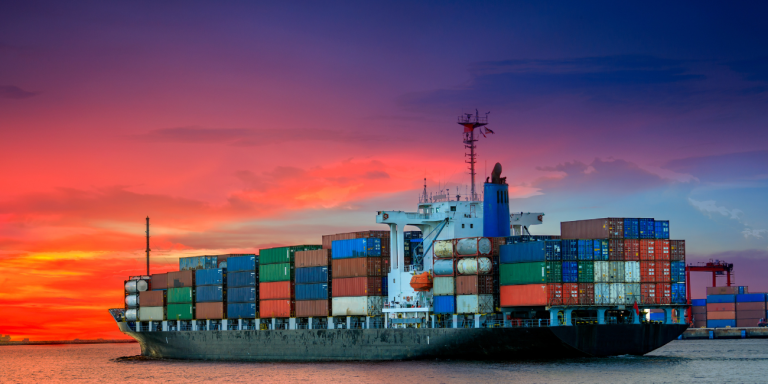In the realm of global trade, sea freight has long stood as the backbone of international commerce. It connects markets, fuels economies, and ensures goods move seamlessly across continents. While modern logistics offer various transportation methods, shipping via the sea remains the most cost-effective and reliable means for bulk trade.
The Foundations of Sea Freight
Sea freight, often interchanged with ocean freight, refers to the movement of goods via ships across international waters. This form of transportation is essential for businesses that require large-volume shipments while keeping costs relatively low compared to air freight. With major ports acting as transit hubs, the efficiency of this system dictates the global supply chain.
The industry primarily operates through two main types of shipments:
- Full Container Load (FCL): A shipment where a single consignee uses an entire container.
- Less than Container Load (LCL): A shipment where multiple consignees share space in a single container, reducing costs for smaller shipments.
Why Sea Freight Continues to Dominate
Despite advancements in air freight, sea freight continues to be the most widely used mode of international shipping. Some of the primary advantages include:
1. Cost-Effectiveness
Shipping goods via ocean freight is considerably cheaper than air transportation. Given the high cost of fuel and airport handling, businesses find it more viable to move their goods through sea routes when time is not a constraint.
2. Capacity for Large Shipments
Ships can carry immense volumes of cargo, making them suitable for businesses transporting bulk goods, raw materials, or oversized machinery. This is especially useful for industries like manufacturing, retail, and construction.
3. Environmental Considerations
Although no form of transportation is entirely eco-friendly, ships produce significantly lower carbon emissions per ton of cargo compared to airplanes. Many shipping companies are also adopting greener technologies to reduce their environmental footprint.
4. Extensive Global Coverage
With thousands of ports worldwide, sea freight offers unparalleled access to markets that may not be economically viable via other transport methods. This makes it a fundamental part of international trade, ensuring that even remote locations stay connected to global supply chains.
Challenges Facing the Sea Freight Industry
While sea freight remains a dominant force, it is not without challenges.
1. Delays Due to Congestion
Major ports often experience congestion, leading to shipment delays. The surge in global trade, coupled with supply chain disruptions, has amplified this issue in recent years.
2. Rising Fuel Costs
Fuel price volatility significantly impacts shipping costs. As prices fluctuate, freight charges adjust accordingly, sometimes affecting the competitiveness of ocean freight services.
3. Geopolitical and Weather-Related Risks
Political instability, trade restrictions, and extreme weather conditions can all affect shipping schedules. Events such as hurricanes, port strikes, or global conflicts often lead to rerouting and additional costs.
4. Regulatory Compliance and Customs Clearance
International shipping involves compliance with various regulations, which differ from country to country. Businesses must ensure proper documentation and adhere to trade policies to prevent unnecessary delays and penalties.
The Role of Technology in Revolutionizing Sea Freight
To overcome the industry’s challenges, technology is playing a crucial role in streamlining sea freight operations.
- Real-Time Tracking: Many shipping companies now offer digital tracking systems that provide end-to-end visibility of cargo in transit.
- Automated Port Operations: Ports are increasingly adopting automation, reducing the risk of human errors and improving efficiency.
- AI & Predictive Analytics: Data-driven insights help companies predict potential disruptions, allowing proactive decision-making.
- Blockchain in Supply Chain: Blockchain technology enhances security and transparency, minimizing fraud and improving trust in international trade transactions.
Future Trends in Sea Freight
The sea freight industry is poised for significant changes in the coming years. Some emerging trends include:
1. Green Shipping Initiatives
With sustainability becoming a priority, many shipping companies are investing in energy-efficient vessels, alternative fuels, and emission reduction technologies.
2. Expansion of Smart Ports
Smart ports, equipped with AI-driven logistics and automated handling systems, are expected to enhance overall shipping efficiency. Countries like Singapore and the Netherlands are at the forefront of this movement.
3. Increased Use of Intermodal Transport
Businesses are increasingly adopting intermodal transportation—combining sea freight with rail or trucking—to optimize supply chain efficiency and reduce costs.
Final Thoughts: Why Businesses Still Choose Sea Freight
In a world that demands efficiency and cost savings, sea freight remains an indispensable part of international trade. Its ability to move large volumes at relatively lower costs ensures businesses maintain competitive pricing. As technology and sustainability measures reshape the industry, ocean freight will continue to evolve, offering even greater efficiency and environmental responsibility.
For businesses looking to expand globally, leveraging the advantages of sea freight can unlock new opportunities and drive long-term success in international markets.

